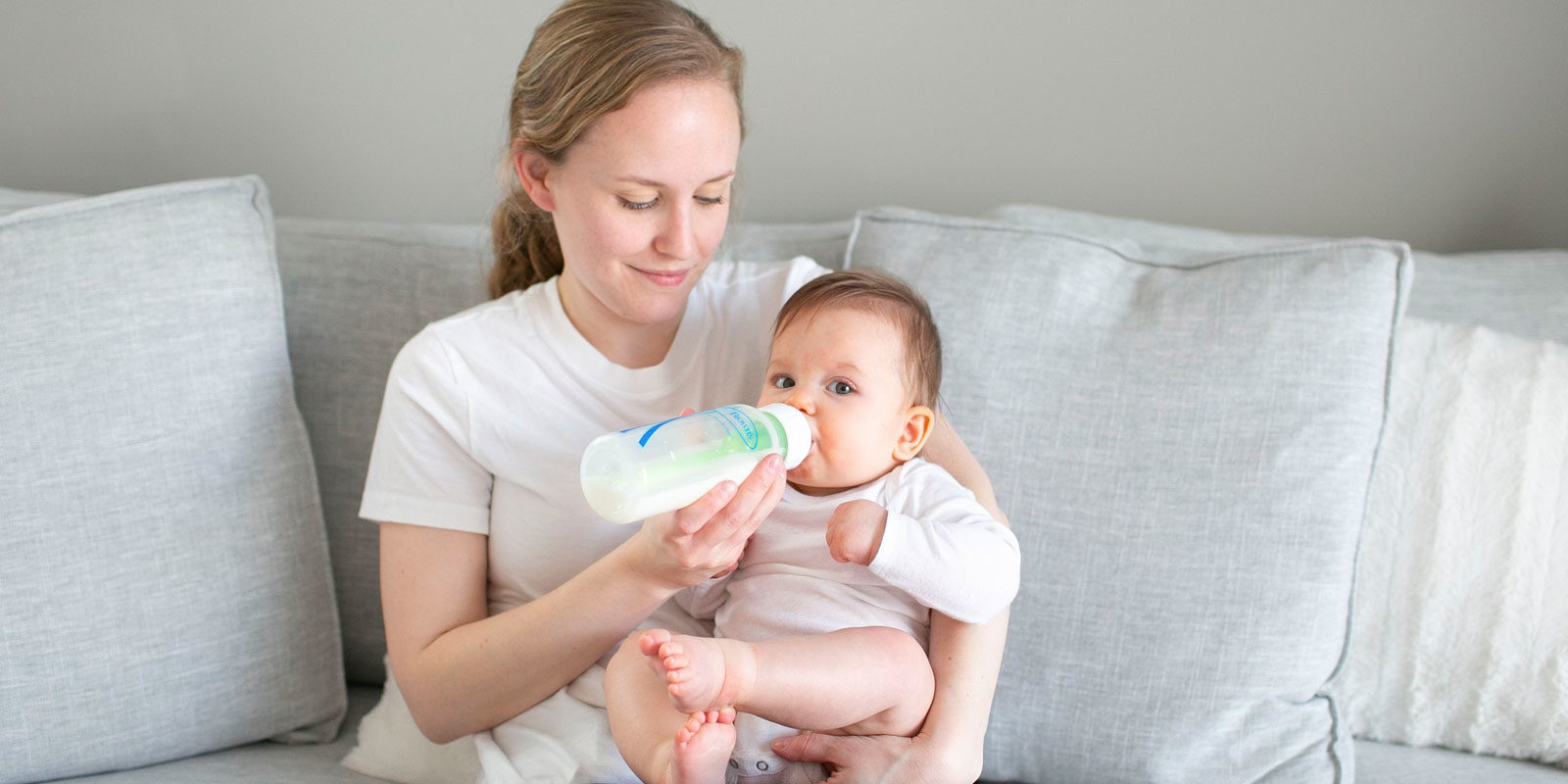There comes a time in many families’ feeding journeys when they prepare for someone else, beyond parents or other primary caregivers, to bottle-feed their babies. Whether it’s due to a short trip away from the little one, or to prepare for returning to work, or simply to hire a babysitter for an evening out: if parents seek the care of someone else who will feed their baby, preparation is key.
From my experience as an International Board Certified Lactation Consultant (IBCLC) and Mother/Baby Registered Nurse, I’ve gathered five bottle-feeding tips for parents to discuss with caregivers who are new to caring for their babies—from babysitters to day care providers to grandparents.
- Milk Storage and Preparation
Understanding proper milk storage and milk preparation to avoid contamination is critical for every caregiver of babies, especially newborns. Plus, preparation guidelines differ for human milk and formula. The Centers for Disease Control (CDC) provides these guidelines along with handy references on how to safely freeze and thaw milk; and how long milk can be stored in a refrigerator, freezer and at room temperature. See here for more details and printable charts on properly preparing and storing various types of milk: - Milk Volume Amounts
Avoiding milk waste, of any type, is critical—especially with the recent formula shortage. Unfortunately, milk waste is quite common. It can look like a day care provider asking parents to fill bottles beyond what the parents know their infant will drink. The provider may request this to help ensure they have a few extra ounces ready and available for each feed, in case the baby wants it. However, I recommend that parents discuss why they give their infant a certain amount of milk. For this reason, it’s helpful to know average milk volume amounts for baby’s age and weight. One source for calculating average milk consumption is www.milkcalc.com. With this tool, parents can enter baby’s relevant information and find an average amount of milk needed for each individual baby. Per the CDC guidelines noted above, once baby starts drinking from a bottle, the clock starts ticking on its usability. After one hour, any formula left should be discarded. After two hours, breast milk should be discarded. To minimize waste, it’s often easier to start a feeding with a little “less” milk in a bottle and then add to it as needed, if baby is still hungry. - Paced Bottle Feeding
Paced bottle feeding can be an option for caregivers who tend to request those “just in case” extra ounces in baby’s bottle. Feeding in this way can help baby learn self-regulation with feedings, and have more control over the amount of milk consumed. Paced bottle feeding can also help slow babies who tend to drink milk too quickly, thus decreasing reflux and spitting up. It can ease the transition from bottle to breast and vice-versa since paced bottle feeding is said to more closely mimic the speed of breastfeeding. Communicating these benefits with caregivers can motivate them to utilize this simple but effective bottle-feeding method. - Additional Comfort Measures
Over time, some parents can determine whether a baby is behaving in a way that indicates they are hungry or simply need comfort. Every baby is different, and it can be easy to confuse comfort cues with hunger cues, especially for a new caregiver, or if baby is still learning to bottle-feed. I advise parents to share knowledge of their individual baby’s behaviors with their new caregivers. For instance, when babies are fussy, some prefer rocking or snuggling. Others prefer darkness and quiet, and some prefer being sung to or moving around. Sometimes, the cause of fussiness is simply gas or a wet diaper. Babies often have different hunger cues, such as licking their lips or nuzzling; and different fullness cues, like turning away from the bottle or shutting their mouth. Learning baby’s cues and preferences can help ease a bit of stress when it comes time to care for baby. These comfort measures can make for a more pleasant experience for baby, so caregivers don’t need to always default to offering more milk. - Open Communication
Last but not least: clear, open communication is KEY! When preparing a caregiver to bottle-feed a baby, parents can help prevent issues by leaving all relevant information in a list. It can be helpful to have a written feeding schedule, and tips for paced feeding and recognizing baby’s specific feeding and comfort cues. Printing and hanging CDC charts and guides on milk storage and bottle preparation in the kitchen or on the fridge will also make it easier for a caregiver. If possible, parents can have the bottles filled, set up and ready to use. And, make sure that the lines of communication between parents and caregivers are open and flowing.
Setting up a baby’s caregiver for bottle-feeding success takes some thoughtful planning—but a happy, well-fed baby is always worth the effort. If parents have any questions, as always, they should reach out to their pediatrician or an IBCLC to help with their family’s feeding journey.
Erica Campbell, RN, IBCLC, is an Internationally Board Certified Lactation Consultant (IBCLC) and a former Mother/Baby Registered Nurse. She founded The Milk Manual as a resource for all parents experiencing their infant feeding journeys. She is on the Dr. Brown’s Medical Expert Panel. Erica currently lives just outside of Houston, Texas, with her husband and two children. When she’s not helping the postpartum and lactating community, she finds solace in going on walks, listening to podcasts and taking naps.
